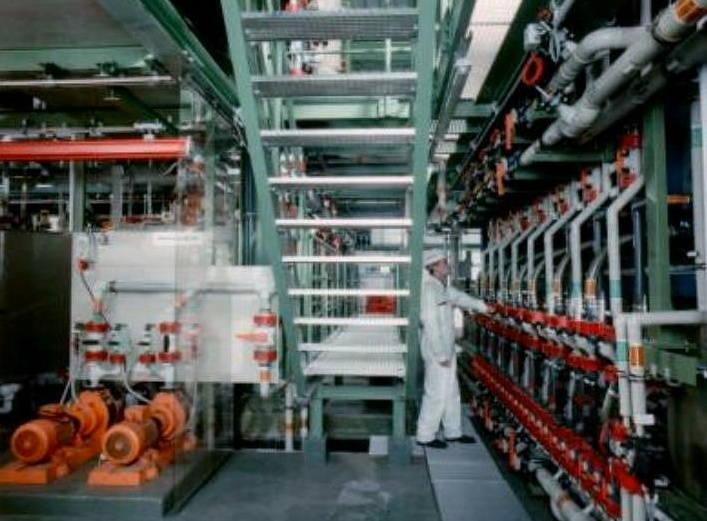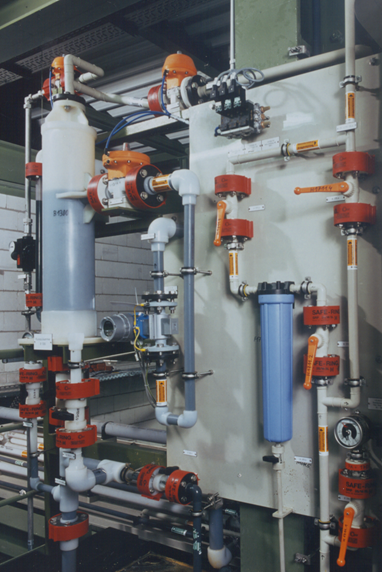Products
RODUCTS
PAcid Purification Unit
This retardation process is based on the separation of the free acid from the metals in a resin bed. Practically it is suitable for all pickling solutions such as HF/HNO3, H2SO4, and HF/H2SO4 etc.
Practically it is suitable for all pickling solutions such as HF/HNO3, H2SO4, and HF/H2SO4 etc.
In the Steuler Acid Pruitfication Unit (SAPU) the free acid is separated from the metals in a resin bed.
The acid absorbed in the resin bed is eluted with water in a second step and returned to the pickling
line, while the solution that contains metal salts and is deficient in acid is disposed at waste water treatment plant.
Process description:
In order to guarantee the long-term and safe application of the Steuler Acid Purification Unit (SAPU)
it is necessary to pretreat the hot,solid-containing pickling solutions: In principal always a complete
solid removal is required ensuring that no particles at all permeate into resin bed and thus causing blockings, increased pressure loss and reduced capacity. This can be done by our Steuler Acid Micro-
blockings, increased pressure loss and reduced capacity. This can be done by our Steuler Acid Micro-
filtration (SAM).
According to the temperature, the kind of the pickling acid and the pickling concentrations, it is nece-
ssary to cool acid liquor before the Steuler Acid Purification Unit (SAPU) in order to adjust the optimal operating temperature. This concerns, in particular, the recovery of hot sulfuric acid and mixed acid purification. The cooling is designed like the one for the Steuler Acid Microfiltration (SAM): as a cost-
efficient single-stage or two-stage cooling based on heat recovery.
The Steuler Acid Purification Unit (SAPU) uses an ion exchange resin that adsorbs the strong acids
from the solution. With water the acid can be desorbed from the resin once again, though. Thus the alternating passing of metal-containing acid and water through a bed of resin makes it possible to separate the free acid from the metal salts.
There are two steps in the basic Steuler Acid Purification Unit (SAPU) process: the upstroke and the downstroke. During the upstroke filtered, metal-containing acid is pumped into the bottom of resin
bed. The acid is adsorbed by resin and the remaining de-acidified metallic salt solution is collected
from the top of the bed. During the following downstroke water is pumped into the top of the bed,
where it desorbs the purified acid from the resin, and is returned to the pickling line as regenerated
acid. The total cycle lasts a few minutes and is automatically controlled.
The waste acid from the regeneration is collected together with the concentrated sludge from the
pre-filtration/sedimentation in the sump pit and conveyed to the waste water treatment plant.
The main benefits are:
— High recovery rate of the free acid entailing a short payback period for small-sized plants, in particular for mixed acid (HF/HNO3)
— Saving in operating costs by reduced sludge production and consumption of neutralizer in the waste water treatment plant
— Easy plant design and operation of the recovery system
— Pre-assembly of the plants ensures short delivery periods with low assembly costs at the job-site